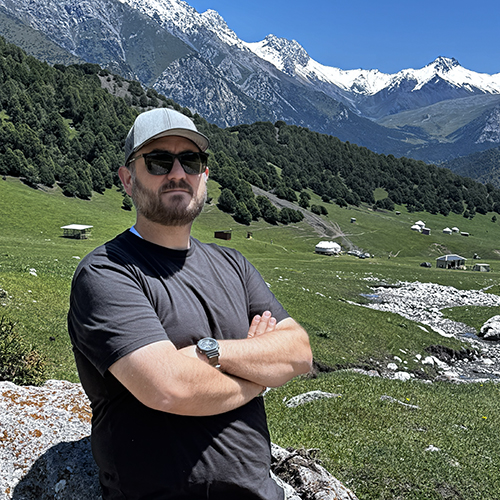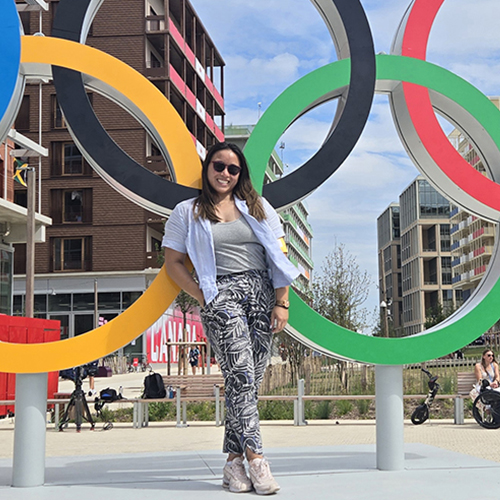Seatttle Seahawks fans were thrilled when their enthusiastic cheers landed CenturyLink Field a spot in the Guiness Book of World Records last year. Their thunderous roar raised the stadium’s noise level to 137.6 decibels, breaking the existing record for sports stadiums at that time.
While fans celebrated, Kelly Tremblay shuddered at the ear-splitting triumph. Tremblay, professor of speech and hearing sciences, knows that exposure to noise at that decibel level, even for one second, can cause permanent hearing damage. The solution is simple: a pair of foam earplugs, priced at about sixty cents. But getting fans to wear them? Good luck.
“Even though I have information about the dangers of noise exposure, if I impose that on the public as an expert in the field, it comes off as preaching,” says Tremblay.
This quarter Tremblay turned to students for ideas. In Hearing Disorders, a 300-level course that looks at pathologies of the ear and their treatment, she assigned “the 12th Man project,” asking the class to propose solutions for protecting Seahawks fans’ hearing without sacrificing team spirit.

Before embarking on the project, students learned about the risks of noise exposure. Any noise over 85 decibels can cause hearing damage, but how quickly that damage occurs depends on how long people are exposed to that decibel level. The hum of a hair dryer, rating 95 decibels, can be damaging after an hour of continuous exposure. A chainsaw, or even a rock concert, at 115 decibels, is bad news after just 30 seconds. (See chart for more examples.) “I compare decibels to calories,” says Tremblay. “People should use them wisely.” She follows her own advice, keeping her iPod at 95 decibels when she goes for a run, recognizing that “at that decibel level, I’m okay for a 30-minute run.”
Now [the students] are advocates for hearing protection. They are engaged in the process. I am confident that they will be part of the solution.
Unfortunately for Seahawks fans, a thunderous roar in CenturyLink field can cause damage instantly. Wearing earplugs can lower noise levels by 30 decibels, extending the safe exposure time, but surveys suggest that fans feel this dilutes the experience and is disrespectful to the team. Changing society’s opinion of ear protection is a daunting challenge, says Tremblay, up there with changing views on smoking or wearing seat belts. “This sort of change can take generations,” she says. “Things happen glacially.”
That’s where the students come in. Working in groups of four or five, the students came up with ideas for encouraging noise protection, ranging from free giveaways of earplugs to catchy media campaigns and new products. Some teams created videos and print ads. One dreamed up a Seahawks earplug mascot, Beast the Bud, whose smiling face tops a neon green earplug body. Another designed a phone app that combines existing decibel testing technology with social media tools that allow fans to share their game-day experience with friends. One team designed an ear-protection product with commercial potential; the students plan to enter it into the Alaska Airlines Environmental Innovation Challenge and the Foster Business Plan Competition, and they may seek a patent. They have been advised by an attorney to keep product details under wraps at this time.
Though the student projects focused on Seahawks fans, football games are not the only setting in which ear protection is recommended. Loud concerts, personal listening devices, and any sporting event that inspires boisterous cheering can put hearing at risk. After learning about noise exposure in the Hearing Disorders class last spring, a piccolo player in the Husky Marching Band was inspired to take action. She made a presentation to her bandmates about the risk of noise-induced hearing loss from musical instruments, and worked with her instructor, Susan Anderson, lecturer and clinical supervisor in Speech and Hearing Sciences, to secure a discount for custom earplugs for members of the band. Unlike standard foam earplugs, the “musician plugs” have a unique filter that drops the sound level by the same amount across all frequencies to avoid sound distortion.
Anderson and Tremblay recognize that inspiring the public to protect their hearing will take time. But they believe that planting seeds of awareness in their students is a first step toward change. “The students come to the course knowing little about hearing,” says Tremblay. “They come thinking it’s good to clean your ears with Q-tips. (It’s not!) Now they are advocates for hearing protection. They are engaged in the process. I am confident that they will be part of the solution.”
As for the Seahawks repeating their Super Bowl win, that’s a stadium challenge that is really out of the students’ hands.
More Stories

Through Soil Science, an Adventure in Kyrgyzstan
Chemistry PhD alum Jonathan Cox spent most of 2025 in Kyrgyzstan, helping farmers improve their soil—and their crops—through soil testing.

A Sports Obsession Inspires a Career
Thuc Nhi Nguyen got her start the UW Daily. Now she's a sports reporter for Los Angeles Times, writing about the Lakers and the Olympics.

Demystifying Quantum
In a physics course for non-STEM majors, Professor Miguel Morales teaches quantum mechanics without the advanced mathematics most quantum courses require.